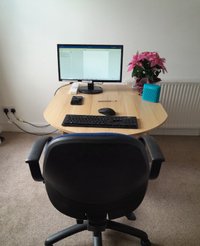
As working from home is now an option for many, it is all too easy to quickly overwhelm a system that may not have been designed to power the many variety of appliances used throughout the day.
Invariably there will be a PC / laptop, monitor and printer, one or two phone chargers, and perhaps an extra router or booster too. Add to these a lamp for the evenings, the all-important kettle to keep you going all day, and perhaps a toaster or even a refrigerator, and a heater to keep you warm.
How this equipment is connected will depend on the set up in your room. Often, we hear about Clients having made a box room or even a cupboard into office space. How many socket outlets do you have in these rooms? More importantly, how many socket outlets will you be using to power the appliances.
In smaller rooms and cupboards, there may only be one available socket, requiring the use of an extension lead to power the required equipment. While this is considered normal practice, doing so can cause issues with overheating if the maximum current rating is exceeded, due to the load of appliances being used.
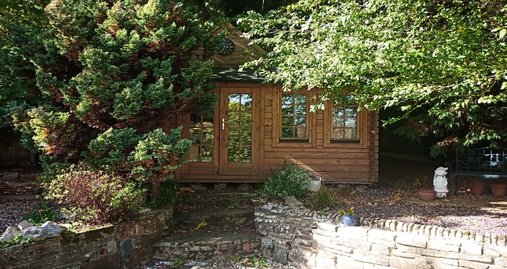
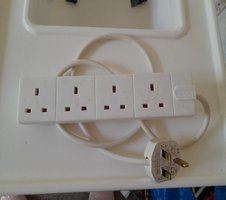
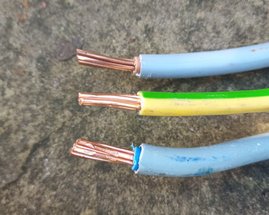
Of course, extension leads can be used quite safely, but bear in mind – the majority of extension leads are rated at 13 Amps, and when a 10-amp kettle, along with all the other aforementioned appliances are added, the extension can soon become overloaded.


0800 061 4600
All cables have some resistance. With copper being a low-resistance material, it is used to conduct electricity, but it will still generate heat during use.
Manufacturers design extension leads to operate at the defined loads, and will size the cable or flex to the smallest acceptable standard to minimise production costs. As a result, it is the user who must look after this equipment to prevent damage and potential danger.
By overloading an extension lead, it will generate more heat, increasing the risk potential
A quality, undamaged extension lead should always be used. Making or repairing your own lead is possible, but selecting a cable which is too thin, or a poor cable termination, could also raise the risk of damage or fire. Most cable reels will also come with a thermal reset button. This is an additional safety measure that will operate, and cut off the power when the reel becomes too hot.
You may not be aware that reels have different power ratings. There will be one rating for when the reel is fully wound, and a second higher rating for when the reel is fully unwound.
Reason: when the reel is wound, there is less opportunity for heat generated in the copper of the lead to escape, and the reel will more easily overheat. While the aesthetics of looking at a fully unwound cable reel is questionable, it is often safer practice.
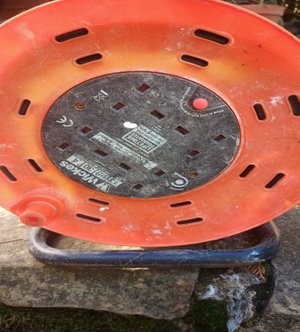
In the event of overload, it would be hoped that the fuse will blow and power will be lost to the affected circuit, but this does not always occur with slight overload. Fuses are designed to operate (fail or blow) quickly with a significant overload, sometimes called a short-circuit, and also to continue to operate over a period of time with a small overload to the circuit.
During the times of overload, (but before the fuse operates), the equipment will be running above the design standard, and causing stress on the components.
This photograph shows the plug and socket that were used to carry a load of about 14 amps for a long period of time. The fuse did not operate, as the overload was slight, and not continuous. This allowed the fuse to cool down, and effectively reset, but the contacts within the plug and socket became the weak link and this is where the fire started. In this instance, it was fortunate that the owner smelt the burning plastic, and called us to investigate.
The result is a live pin from the socket still in the wall, which could easily result in an electric shock, and bringing a house perilously close to having an uncontained fire in the spare bedroom.
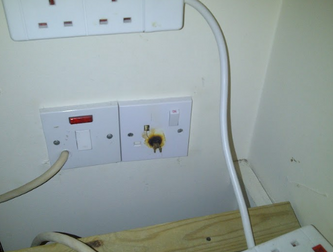
Extension leads should only be used as designed, and you should never 'daisy chain' extension leads together to overload the original plug and socket. If you use more than one extension lead per socket, it will significantly raise the risk of overloading the socket.
Yes! It is often quite an easy process to install additional sockets. We will install double sockets as standard to provide double the capacity for power as a single socket.
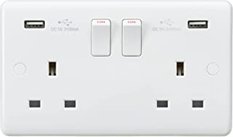
Good sockets with USB ports can often offer superior charging speeds, and for an experienced electrician the installation of extra sockets is usually a speedy job. See here for a guide on USB sockets.
Sockets are available with integrated USB ports, which are now a cost-effective option and can reduce the number of plugs needed to charge a mobile phone or tablet.
Call us for a no obligation quote should you now have any concerns with your system

0800 061 4600
LOOK OUT FOR THE NEXT GUIDE
Help Guide No. 2 - RCD Protection in your homeThe seat belt of your electrical system
Click here for Help Guide 2: Consumer Units and Fuse Boards

Solid Electrical is part of Solid Franchising, the development partner for tradesmen and tradeswomen across the country.
Copyright © All Rights Reserved